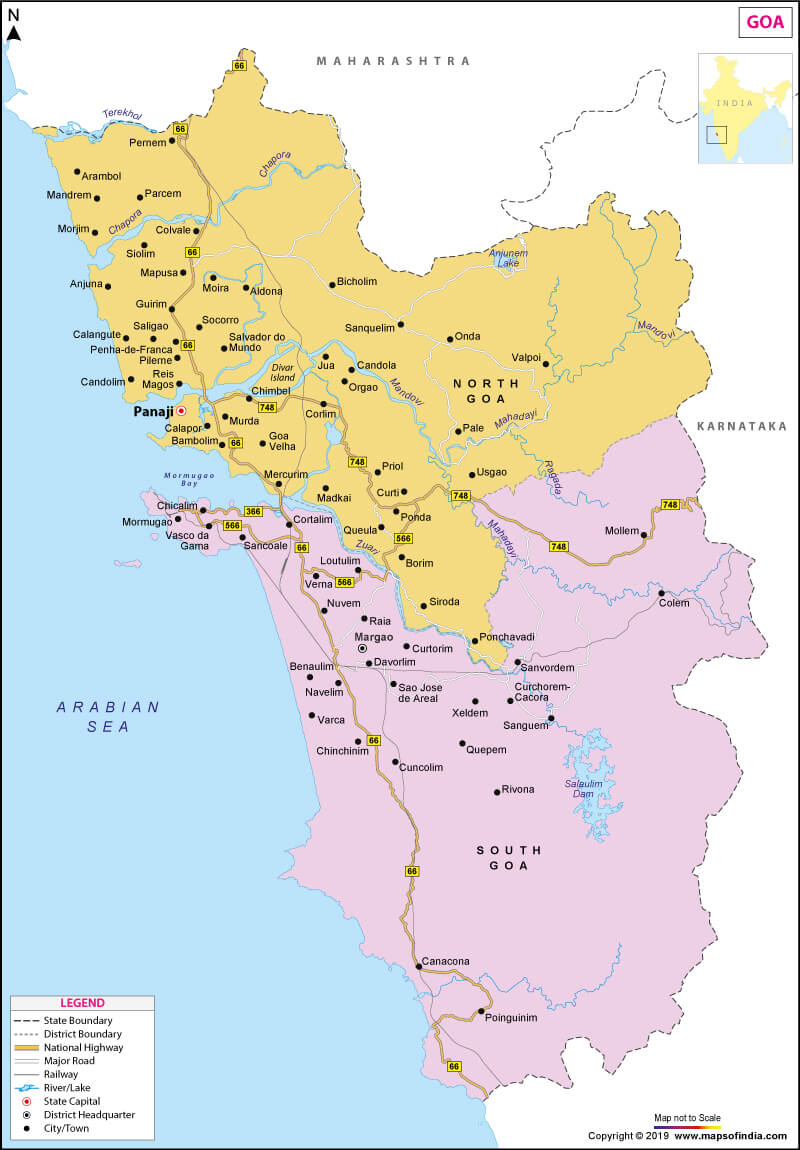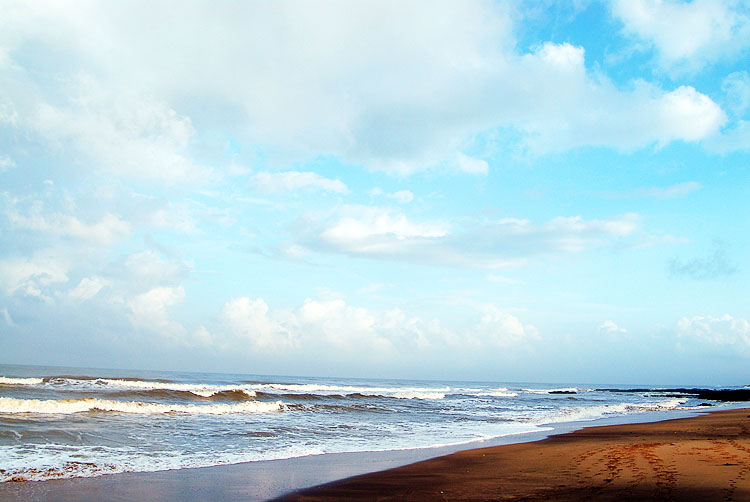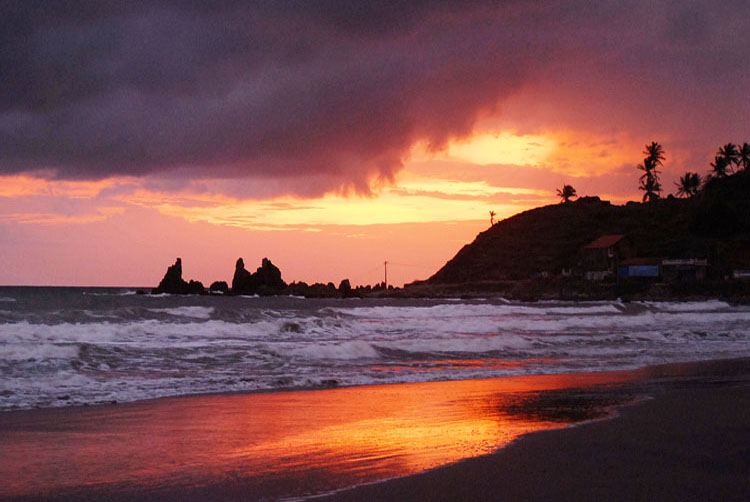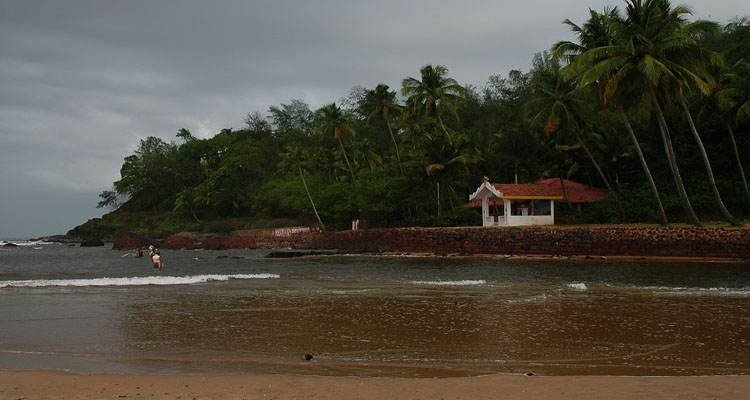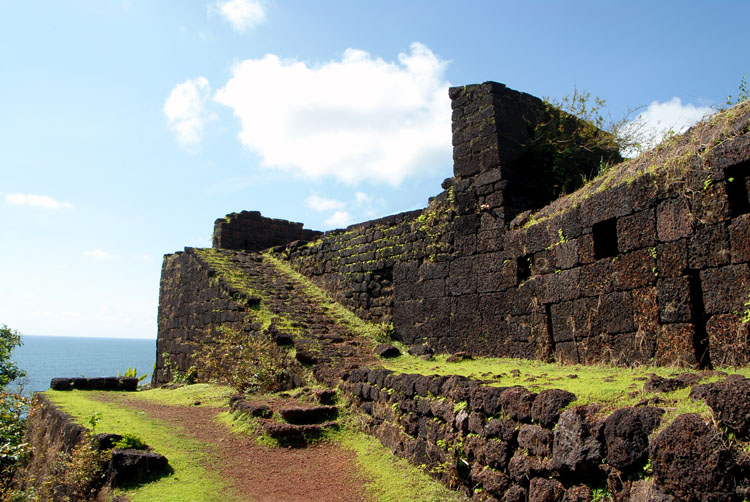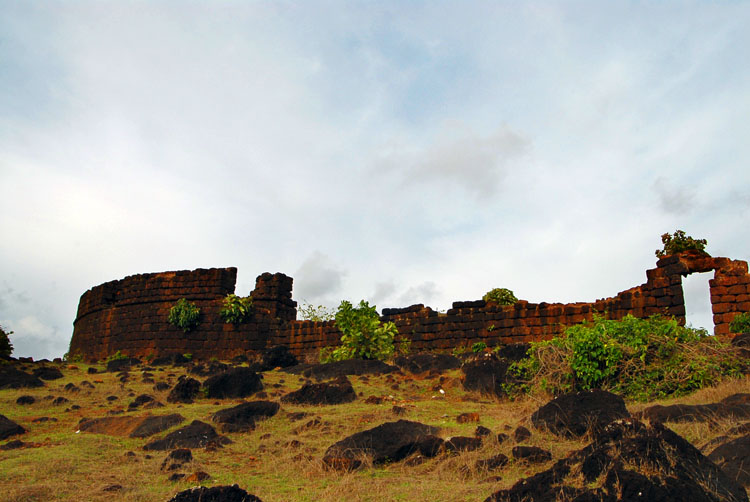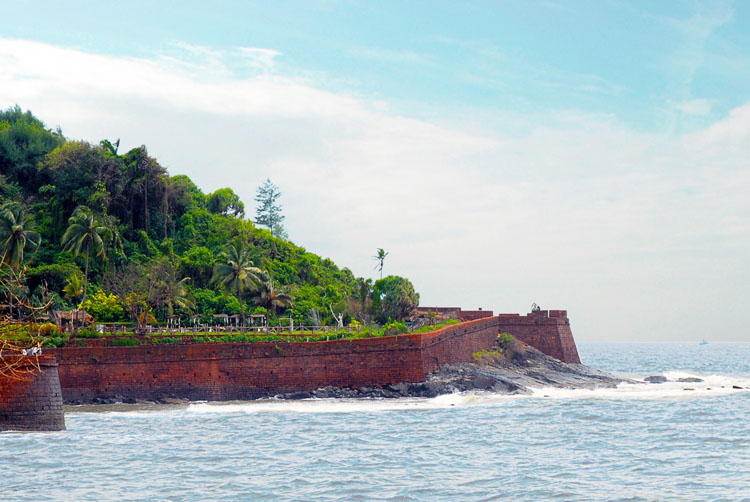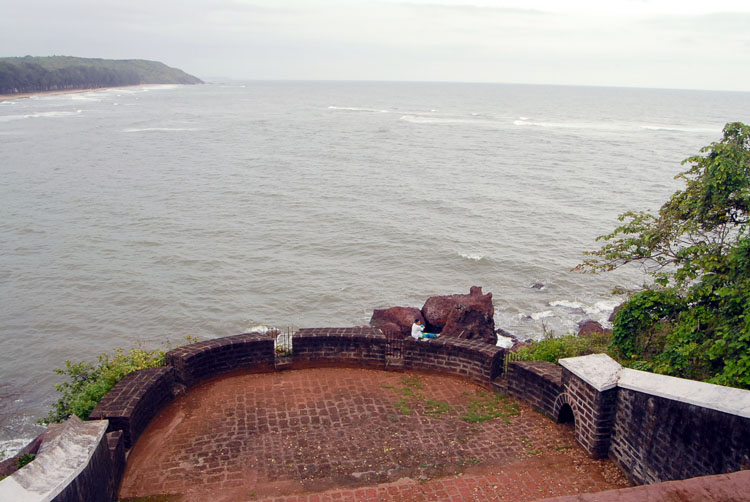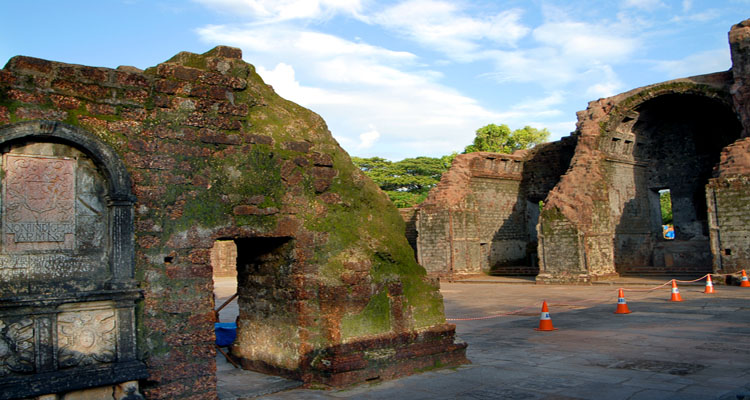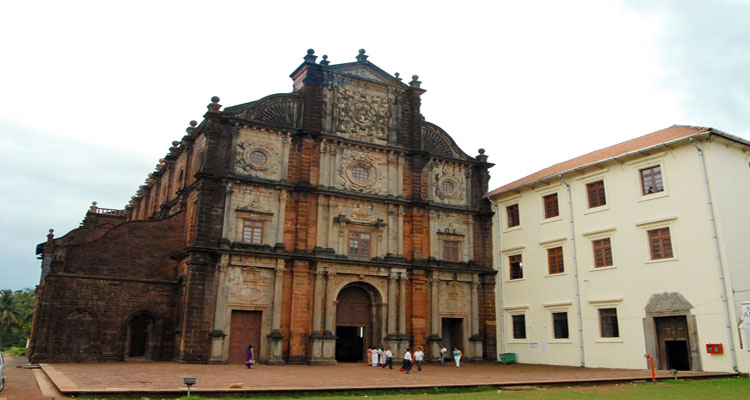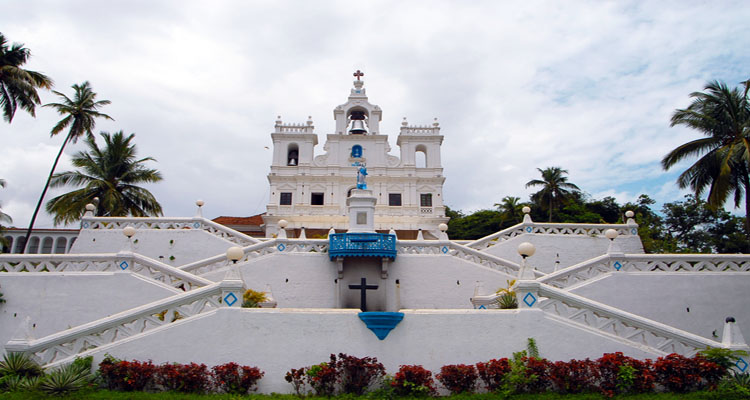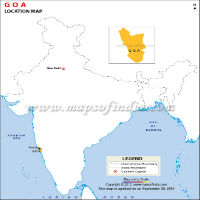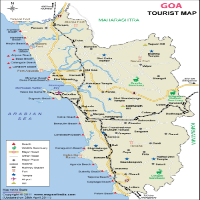About Goa
Well known for its exotic beaches, heritage architecture and places of worship, Goa is truly a travellers' delight. Situated on the western part of the country, it is the smallest state in India in terms of area and among the least populous. Bounded by Maharashtra to its north, Arabian Sea on the West, and Karnataka on the South and east, Goa covers a major part of the Konkan region of India. Panaji is the capital of Goa and the state is considered to be the richest state in India with a very high GDP.
Every year, thousands of people from all across the world visit the state in order to witness the beautiful sandy beaches and mesmerizing hills apart from its breathtaking natural scenic beauty. The total area of this state is not more than 3702 kilometer square and the coastline stretches roughly around 100 kms. Goa exhibits the cultural influence of the Portuguese, since it was a former province of them. North Goa is divided into 6 talukas whereas south Goa can be divided into 5 talukas with 233 and 150 districts in each. The total population of the state is around 14,58,545 and stands out to the fourth lowest in the entire country. The tropical monsoon climate of the place makes Goa hot and humid and an ideal place for vacation for international tourists.
| Facts on Goa | |
|---|---|
| Official Website | www.goa.gov.in |
| Date of Formation | May 30, 1987 |
| Area | 3,702 sq km |
| Density | 394/Km2 |
| Population (2011) | 14,58,545 |
| Males Population (2011) | 7,39,140 |
| Females Population (2011) | 7,19,405 |
| No. of District | 2 |
| Capital | Panaji |
| Rivers | Mandovi, Zuari, Terekhol, Chaporakushavati, Sal, Talpona |
| Forests & National Park | Bondla WS, Mollem NP, Dr. Salim Ali Bird Sanctuary, Cotigao WS, Bhagwan Mahavir WS |
| Languages | Konkani, Marathi, English, Hindi, Portuguese |
| Neighbours State | Maharashtra, Karnataka |
| State Animal | Gaur |
| State Bird | Black Crested Bulbul |
| State Tree | Matti |
| Net State Domestic Product (2011) | 168572 |
| Literacy Rate (2011) | 79.31% |
| Females per 1000 males | 968 |
History of Goa
The history of Goa is rich and diverse. In the 3rd Century BC, Goa was under the rule of the Mauryan dynasty, and after that, the state was successively ruled by Satyahanas, the Chalukyas, the Shriharas and the Kadambas. It was only in the 14th century that Goa was conquered by the Muslims, and the then Hindu king Harihara from the Vijaynagar Empire was forced to evacuate the area. After a rule of around 200 years, in 1510, the Muslims were defeated by the Portuguese who had come as traders and managed to establish their supremacy over the coastal area. When India got its independence in 1947, Portuguese were forced to hand over Goa to the Union of Indian government, but the former were not ready at all. In 1954, the nationalists of Goa established a pro-Indian supremacy by seizing the Dadra and Nagar enclaves of the Portuguese. The next year, the Satyagrahis with a huge force entered into the territory of Goa and, after a series of verbal negotiation between Portugal and India, the former accepted defeat. In 1961, the Indian Air Force and Navy invaded as well as occupied Goa as their own and, just a year later, Goa was given the status of a union territory under the Indian government. It took another 26 years for Goa to attain statehood and in 1987, finally, Goa was officially declared as a state. More details...
Geography and Climate
Being a prime location of the Konkan coastal belt, on the western coast of the peninsula of India, Goa shares a natural border of the Terekhol River that separates itself from Mahararashtra in the north. The Western Ghats stand to the east of the state and the gigantic Arabian sea to the west. Goa can be divided into four different regions, the coastal plains with areas like Mormugao, Tiswadi, Salcete and Bardez, the Eastern Hilly region that comprises areas of the Western Ghats like Sanguem, Sattari, Canacona, and Ponda, the Flood Plains comprising of the rolling uplands and the coastal plains as well as the central valley lands consisting of the areas like Eastern Sanguem, Bicholim, Pernem, and Quepem. The main rivers are the Mandovi, Zuari, Tirakol, Sal, Chapora and the Talpona that flow across the state and meet to the Arabian sea, forming several bays and estuaries, only to enhance the sheer beauty of the exotic coastline. Goa has a moderate, typical tropical monsoon climate with hot summers and chilly winters. For the rest of the year, the climate remains quite soothing. Monsoon is one the main seasons of the state with July receiving the highest rainfall. A considerable part of the state is covered by the forests, which adds much to the bio-diversity of the state. More details...
Demographics
Goa has a small area and stands in the fourth position in the list of states with the least population. The growth rate is around 15% for the state. Goa is known to have an urban population of around 50% mainly staying away from the rural zone. There are around 960 females in comparison to 1000 males and the state is considered to be the one with the least number of schedule tribes staying in it. According to the government figures, almost 65% of the inhabitants are Hindus, mainly consisting of the Marathis, Telegus, Tamils and Gujaratis, since the regions dominated by them are nearby the state. Next are the Christians, that constitute almost 7% of the total population. Few colonies of Portuguese are still believed to be existing in the state since they had ruled the place for around 450 years and follow their own traditions and customs even today. People belonging to religions like Islam, Sikhism, Buddhism and Jainism are also staying here in the state peacefully and in harmony with the others.
Economy
| Click to View large Map |
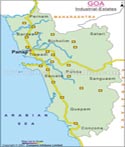 |
| Goa Industrial Map |
Transport
Goa being a hot favorite spot for the tourists from all around the world, it is well connected and can be reached from anywhere. There are several airways that are found around the Dabolim international airport for domestic as well as international flights. One can reach Goa from Mumbai which is quite nearby. The Konkan railways have numerous rails running through the state and connecting it to Mumbai and Mangalore in the north and the south respectively. Not only that, trains are available from Goa to almost all parts of the nation. There are plenty of bus services that run frequently from Goa to places like Mumbai, Bengaluru, Pune, Mangalore and other states. Faster and comfortable, these buses may be expensive but are actually more popular options than the trains. Paulo travels are the most well known bus services operating in almost all parts of the city. Every day, several buses run from Mumbai to Margao and Pune for the convenience of the travelers. Within the city, the daily passengers can avail several buses, taxis and auto rickshaws to move from one place to the other. Private cars are also popular options for people who can afford it. Motorcycle taxis are widely popular in connecting different parts of the city as they can get inside the most interiors of the places as well.
Society and Culture
| Click to View large Map |
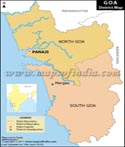 |
| Goa Map |
Goa is also known as “party capital” of the country. There are several music festivals going on throughout the year. Some of the popular music festivals of Goa are Sunburn which takes place in the month of December, Sonic Music Fest, Octoberfest, Goa carnival, Sao Joao, a dancing music fiesta. More details...
Food
Goan food is heavily influenced by Portuguese culture. Some of the prime ingredients used in Goan cuisines are fish, rice, seafood, meat, coconut and kokum which is a kind of fruit. Some of the popular Goan cuisines are Goan fish curry, Prawn balchao, Fish recheado to name a few.
Language
According to the Official Language Act of 1987, the only official language of the state was Konkani and the officially accepted script was Devanagari. Konkani, like a majority of Indian languages, hails from the Indo-Aryan family and has many dialects based on religion, region, caste and locality. Some people are in demand of changing the script of Konkani to Roman, however, nothing has been declared officially as yet. When Goa was being ruled by the Portuguese, however, the official language was Portuguese itself. Some people from the older generation still use the language to communicate among themselves. Portuguese is also the language to communicate among people staying in the old colonies under the influence of Portugal culture. The second most spoken language is Marathi, which is even taught in the schools. It is widely accepted as the second official language after Konkani. Since foreigners are found in abundance in Goa, localities have also learnt to at least understand and converse in English. Some local guides have adopted other languages like French, Italian and Dutch since they have to converse with the tourists coming from these places. Hindi is well spoken and understood by all Goans. Other than these, Kannad, Urdu, and Gujarati are also spoken by people belonging to the communities.
Tourism
| Click to View large Map |
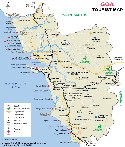 |
| Goa Travel Map |
Government and Politics
Ever since it has attained statehood, Goa follows the same structure of government followed by the rest of the states in India. The government of the state possesses a unicameral legislature with 40 members in the legislative assembly. From 1962 till 1990, the political scenario of the state was quite peaceful, however, since then, for the next 15 years, Goa has witnessed almost 14 governments ruling the state. In 2005, the then governor of Goa, dissolved the legislative assembly and President's rule was declared. In June 2005, a by-election took place, where Congress won 3 of 5 seats of the legislative assembly. At the assembly elections of 2007, Congress coalition gained the majority of the votes from the voters and established their rules on the state. BJP is another strong political party existing and fighting for supremacy against the Congress. Several other parties like the Nationalist Congress Party, the United Goans Democratic Party, and the Maharashtrawadi Gomantak Party are among the few who are politically active in the state. In 2012, BJP won in Goa forming an alliance with the Maharashtrawadi Gomantak party winning the maximum of the seats. The current chief minister of Goa is Pramod Sawant of the Bharatiya Janata Party (BJP) and Mridula Sinha is the current governor of the state.
WBST180914
Education
With a literacy rate of around 87%, Goa government encourages education for all individuals. Every taluka consists of villages where there is at least one government school as well as private schools. These schools come under Goa Board of Secondary & Higher Secondary Education, as well as ICSE or the NIOS boards.
